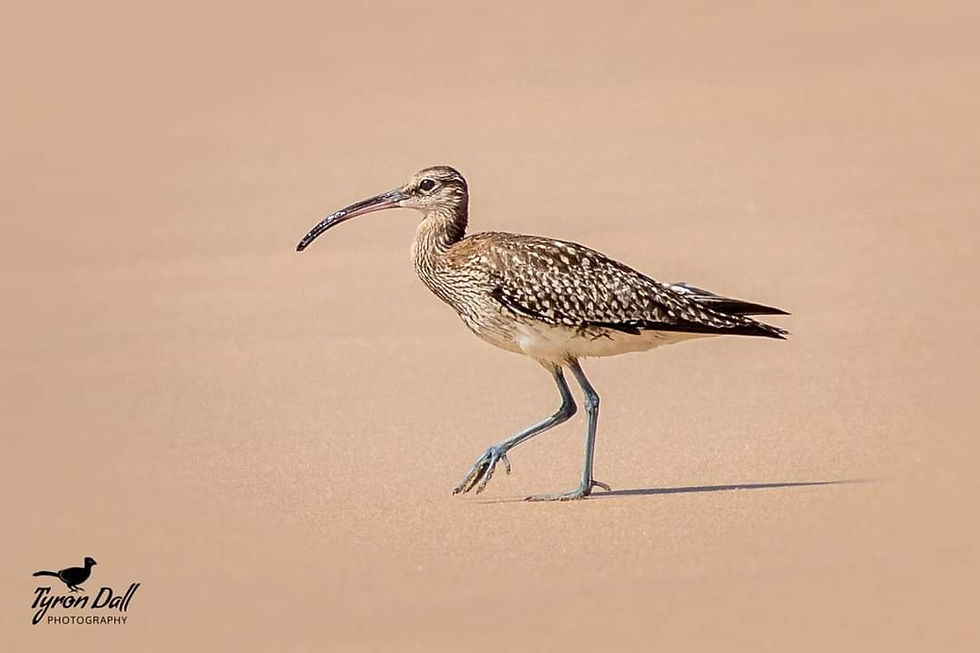5 Tips to Help You Better Identify Waders
- Adam Cruickshank

- Nov 14, 2024
- 2 min read

Identifying waders can be tricky, but with these five tips, you'll sharpen your skills and gain confidence in recognizing this group of birds. To improve even further, I highly recommend Faansie Peacock’s book Chamberlain’s Waders – A Definitive Guide to Southern Africa’s Shorebirds. It's the best resource available in the region for mastering the identification of these challenging birds.
1. Focus on Shape and Structure
Waders exhibit subtle yet distinct differences in body shape, bill length, bill shape, and leg length. Faansie Peacock emphasizes that these structural features are often more important than plumage details. Pay attention to these characteristics—whether the bird has long, slender legs or a short, stubby bill. While it might be challenging for new birders, spending time in the field observing different waders will help you recognize these differences over time. There’s no shortcut—just time spent outdoors honing your skills.
2. Pay Attention to Behavior
Waders have distinct feeding and movement behaviors. For example, sandpipers are constantly probing in mud with quick, repetitive movements, while plovers tend to stand still and dash to catch prey. Observing how they walk, feed, and interact with other birds can provide valuable clues. As Faansie suggests, pay attention to flight style, foraging strategy, sociability, aggression, posture, tameness, and interactions with others.
3. Study Plumage Patterns Carefully
Though waders may seem dull or similarly colored at first glance, close observation can reveal key plumage details like wing bars, rump patterns, or subtle head markings. In flight, some species display unique wing patterns that might not be noticeable when they’re at rest. However, Faansie advises that if you can’t spot these fine details, focus on the bird’s general impression. Try describing it with one word—such as "spotted" for a Wood Sandpiper.
4. Learn the Calls
Recognizing waders by their calls can be difficult, but it’s an invaluable skill, especially when identifying flocks. Some species have clear, distinctive calls that are recognizable even from a distance. You don’t need to learn all the calls, but getting familiar with the common species in your area will make identification easier. Once you know the usual calls, it becomes more noticeable when something unusual calls.
5. Consider Habitat and Season
Waders often stick to specific habitats like mudflats, marshes, or sandy shores, and their presence can be seasonal. Knowing which species to expect based on habitat and time of year will help narrow down your options. Faansie notes that only 30 of the 80 waders in our region are non-migratory, so be aware of when different species are likely to be around.
We hope these tips have been helpful! Are there any other identification tips you think we should include? Drop us an email and let us know!
This article was originally featured in The Daily Birder email. While we share a limited selection on our website, to ensure you never miss an article, sign up for The Daily Birder email today - https://bit.ly/TBLnewslettersignup
For those who would like to learn more about Waders, we have the following podcast episodes. Wader Quest and The Wonder of Waders.
We been lucky enough to have Faansie on The Birding Life Podcast, not once, not twice, but three times. Oh, and if you still don't have his waders book, what are you waiting for?



With the rise of 5G, digital platforms are definitely improving in terms of speed, responsiveness, and overall user experience. Streaming is smoother, real-time features work better, and apps load faster with less lag. It’s especially noticeable in platforms that rely on quick interactions and data processing. If you're curious to learn how this affects strategies and platform performance, I recommend reading this article about 1Win’s features: https://wikisouthafrica.co.za/hidden-features-1win-boost-betting-strategy/ , it highlights some smart tech improvements worth knowing.
How is the quality of digital platforms changing with the development of 5G?